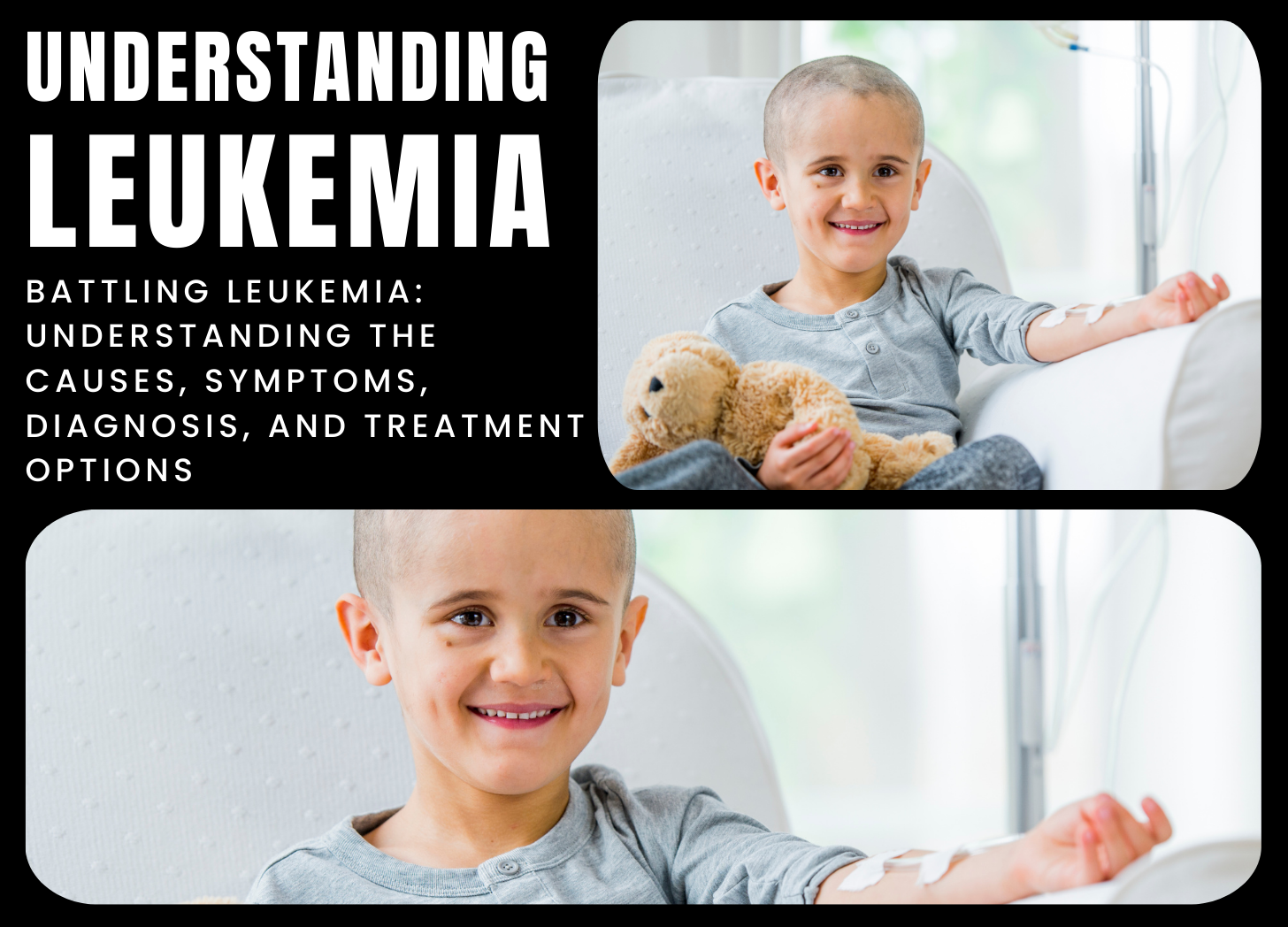Contact Us
Contact Us

Leukemia is a kind of cancer that affects the blood and bone marrow, resulting in abnormal production of white blood cells. These aberrant white blood cells, known as leukemia cells, crowd out regular blood cells, reducing the body’s ability to fight infection. Leukemia is categorized into numerous categories based on the type of white blood cell involved and the rate of disease progression. The four primary kinds of leukemia are acute lymphoblastic leukemia (ALL), acute myeloid leukemia (AML), chronic lymphocytic leukemia (CLL), and chronic myeloid leukemia (CML).
The specific cause of leukemia is unknown, although it is thought to be caused by genetic abnormalities in blood cell DNA, which result in uncontrolled growth and multiplication of aberrant white blood cells. Exposure to ionizing radiation, certain chemicals (such as benzene), chemotherapy or radiation therapy for previous cancers, genetic disorders (such as Down syndrome or Li-Fraumeni syndrome), smoking, and a family history of leukemia all increase the risk of developing leukemia.
Leukemia symptoms may include fatigue, weakness, pale complexion, fever or chills, recurrent infections, easy bruising or bleeding, swollen lymph nodes, an enlarged liver or spleen, unexpected weight loss, and bone discomfort. The symptoms of leukemia might differ based on the kind of leukemia, the stage of the disease, and the existence of comorbidities such anemia or infection.
Leukemia is typically diagnosed through a combination of medical history, physical examination, blood tests (such as complete blood count and peripheral blood smear), bone marrow aspiration and biopsy, and imaging studies (such as X-rays, CT scans, or MRI) to assess for organ involvement or complications. Genetic testing and cytogenetic analysis can also be used to discover specific genetic mutations or chromosomal abnormalities linked to certain forms of leukemia.
Treatment for leukemia is determined by the type of leukemia, the stage of the disease, and the individual’s general health and preferences. Common treatment options include chemotherapy, targeted therapy, immunotherapy, radiation therapy, and stem cell transplantation. Treatment can be given alone or in combination, and it can be personalized to each individual based on their disease features and treatment objectives. Leukemia treatment includes supportive care measures such as blood transfusions, antibiotics, and drugs to manage symptoms and side effects.
To summarize, leukemia is a kind of cancer that affects the blood and bone marrow, causing abnormal production of white blood cells and weakening the body’s ability to fight infection. Early detection, correct diagnosis, and appropriate care are critical for optimizing outcomes and improving survival rates in people with leukemia. Healthcare practitioners and communities can aid persons afflicted by leukemia by raising knowledge about the disease’s signs and symptoms and supporting access to proper medical care and treatments.
References:
1.American Cancer Society. (2022). Leukemia. Retrieved from https://www.cancer.org/cancer/leukemia.html
2.National Cancer Institute. (2022). Adult Acute Lymphoblastic Leukemia Treatment (PDQ®)–Patient Version. Retrieved from https://www.cancer.gov/types/leukemia/patient/adult-all-treatment-pdq
Post a Comment